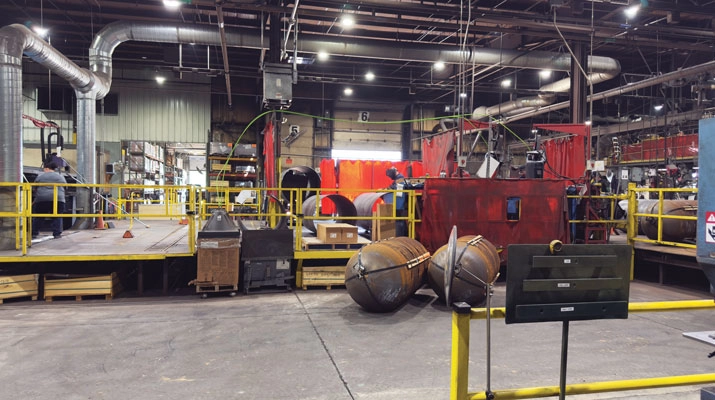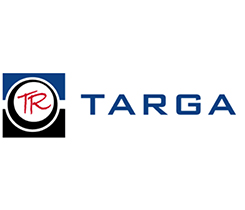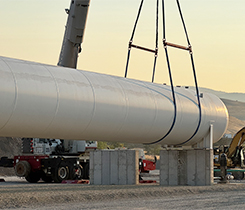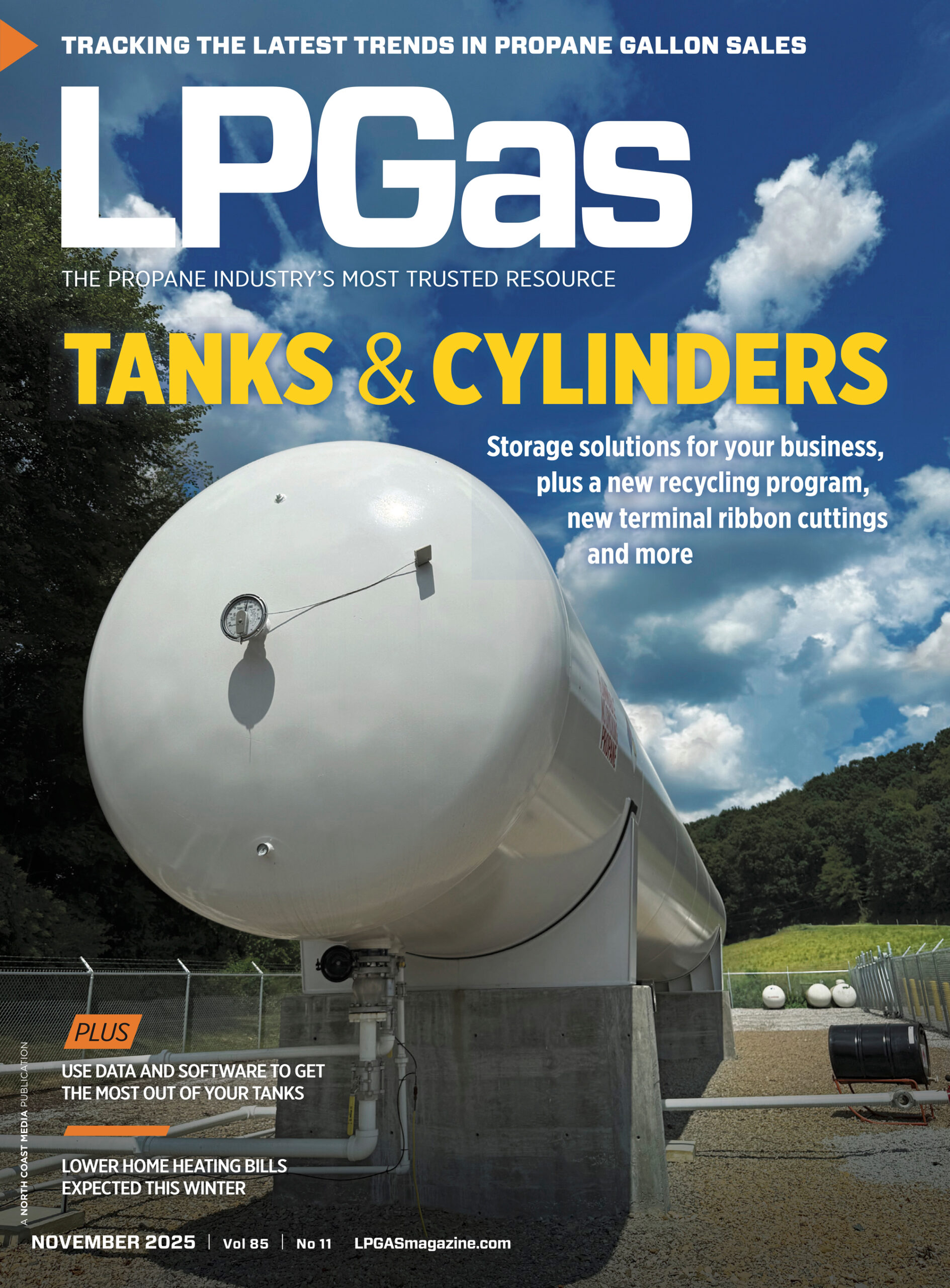Retailers advised on factors that could impact supply this winter

The pandemic may cause extra logistical challenges this winter. Photo by LP Gas staff
Varying degrees of uncertainty over what winter will bring are routinely top-of-mind during the summer and fall propane-buildup periods, but the temperature has been turned up a notch for marketers preparing for this year’s heating season.
Economic pressures, a virulent global pandemic, reduced refinery throughput and robust overseas demand are among the perplexing challenges faced by propane retailers.
And even before the first snowflake falls, experts are already warning that relying on the spot market as a quick relief valve like in previous years could put retailers in a tight spot should a period of high demand take hold.
Advisories abound pertaining to contracting gallons and formulating a flexible business plan going into this winter’s unforeseen circumstances.
“This is a really, really unknown situation,” cautions consultant Mark Rachal of Cost Management Solutions.
“The only thing normal about this year is that nothing is normal,” concurs Tucker Perkins, president and CEO of the Propane Education & Research Council (PERC).
“Everybody’s going to have to be very vigilant and watching all of the fundamental pieces,” Rachal reports, referring to the latest supply and demand scenarios: How is production running? Are imports lessening and exports growing? Has pipeline access been secured and/or rail cars procured? What are the latest cost factors? And perhaps most importantly, what’s going on with your local weather conditions?
Rachal and others are predicting an uptrend in pricing this year. Propane retailers need to be prepared for tightness of supply, he adds, urging them to build pipeline allocations in their marketing area.
“If you can’t get the rail cars from Canada, and you’re getting less supply from the refineries, it’s going to push more people to the pipelines,” says Rachal. “We already know the pipelines have struggled recently – even in mild winters.”
According to Perkins, “all of the advance signals” are suggesting the possibility of looming supply uncertainties. These can take the form of inventory shortages in a particular area of demand, reduced availability of spot product, an all-around tightness of credit regarding financial transactions and an assortment of pandemic-induced impacts on retailers’ ability to schedule deliveries.
“The spot market is not nearly as robust as it has been in previous years,” says Perkins.
“We do not have an issue of supply,” he observes. “We have an issue of logistics.” Plenty of overall supply is anticipated, but that supply needs to be where retailers can efficiently access it.
Retailers should be digging deeper than usual as they make their supply and demand calculations, Perkins says.
Alternative sourcing options should be accounted for on a continuing basis, as medical experts are expressing fears of an extra-fraught flu season coupled with heightened coronavirus outbreaks.
“It’s important for you to realize where your gas is coming from, and make your contingency plans accordingly,” says John Powell, senior vice president and head of the marketing, supply and logistics group at Crestwood Equity Partners.
As retailers ponder the pandemic, according to Perkins, they should consider several key questions, such as: What happens if the train crew aboard an anticipated rail delivery is waylaid by illness? What is an alternative should the drivers of arranged transport runs suddenly face quarantine orders?
How are retailers expecting to maintain operations if members of their own staff are forced to call in sick or rendered homebound while caring for stricken family members?
“We’re going to be dealing with COVID-19 for this entire winter, and marketers need to think this through,” says Perkins. “We’ve all been thinking that there’s going to be some miracle that will change things, but it looks like that miracle is not going to happen.”
Local market tightness
Perkins encourages retailers to be proactive in reaching out to customers before wind chill factors into daily relevance.
Customers accustomed to calling in on an as-needed basis for a fill-up are especially important to contact and hopefully get under contract, as they are likely to be unaware of the disruption they can cause to a marketer when they are low on fuel in the middle of high heating demand or during periods of higher agricultural demand, says Perkins.
There is plenty of propane supply in the U.S., Rachal says, as the nation has averaged exports of 1.119 million barrels per day (bpd) so far this year compared to 1.064 million bpd during the same period last year.
The amount of supply to meet this year’s domestic needs is more than enough; the robust supply situation has been around for years, he points out, but that doesn’t necessarily prevent tightness from developing in some areas, often due to short-term logistical issues.
“There is certainly an expectation of reduced imports via rail from Canada as producers there increase exports to other markets, namely Mexico and Asia,” says Rachal.
The potential for reduced rail availability is a real concern for this winter, he continues.
“That is especially true with a lot of crude and associated natural gas production shut in the Bakken that would normally provide more Midwest supply. Also, the supply from Marcellus and Utica shale plays that used to remain in the Midwest is now moving east to Marcus Hook for export or movement into the Northeast,” Rachal says.
“We are confident there will be a lot more supply than demand overall,” he explains. “So, we are not particularly concerned about huge price spikes at Mont Belvieu this winter. There would be more concern about a spike in prices at Conway during the peak domestic demand period.”
Rachal notes that “we are also concerned about local market tightness due to the inattention to infrastructure needed for meeting domestic demand in the winter. That is no longer an industry focal point, and propane retailers are being saddled with the burden of maximizing assets and supply control to successfully navigate peak demand periods.”
Leslie Anderson, president and CEO of the Propane Gas Association of New England, observes that she too is harboring concerns over supply and distribution issues that could be aggravated by the COVID-19 situation.
The pandemic’s impact and lower crude prices, plus a decline in oil and gas production “are reducing propane supplies from all major basins, resulting in what may end up being a squeeze across the propane industry for supply and demand,” according to Anderson.
“Now that we have export terminals hooked up to some of the pipelines and the demand for exports is increasing out of British Columbia and Marcus Hook, the rail that we’ve been getting as a result of how it was moving to these markets in the past is not going to be there this year,” she elaborates.
“We should not count on rail moving across the U.S.; now it will be piped directly to these facilities or go west to Ridley Island instead of coming across to the east,” she says. “It’s a big concern for us” as vigorous exports could put a crimp on domestic surplus supply.
“Couple that with regional production being down and more regional volumes being exported,” says Anderson, and “we could have our local markets facing disruption if there’s a cold-weather event this year. If that happens, barrels will be moving further distances to meet demand,” thus leading to higher costs.
“Some of the big Canadian suppliers from past years have pulled out and are not supplying to our region anymore, and we’re having to adjust to accommodate that,” she adds. “As a result, it’s going to be tighter.”
Anderson advises retailers to be wary about reducing their contracted gallons due to a large commercial account undergoing a coronavirus-induced shutdown or other anxiety-producing disruptions that could turn out to be temporary or offset by different demand sources.
“We found last winter you shouldn’t decrease your gallons based on an account not coming back online,” she recounts, “because we’re seeing an increase on the residential side.”
Uptick in gallons
D.D. Alexander, president of Global Gas who serves on the National Propane Gas Association’s Executive Committee along with its Propane Supply and Logistics Committee, noticed an uptick in gallons this spring with so many people staying home.
“If COVID-19 lingers into this fall and winter, I believe we will see the uptick in gallons again from people being home more,” she says.
The overall summer build was proceeding at a strong level, according to Alexander. “However, please don’t let that fool you,” she says, forecasting that the biggest issues for this winter will be increased exports on the West Coast and Mid-Atlantic region.
Surplus propane has been coming down into the U.S. and Mexico from western Canada, and “now with the exports out of western Canada, the gas that has been in ample supply will no longer be so readily available to be railed to the Northwest and Mid-Central states. The same goes for exports out of the Mid-Atlantic. The gas that had been surplus and readily available will be used for exports,” Alexander says.
“The slowdown in production, especially in the gas-rich Marcellus shale region, has exacerbated the issue in the Northeast. Supply will truly be a local issue this winter. The experts are saying that there may not be the extra gas in other PADDs to help out PADDs with supply issues,” she says.
Crop reports
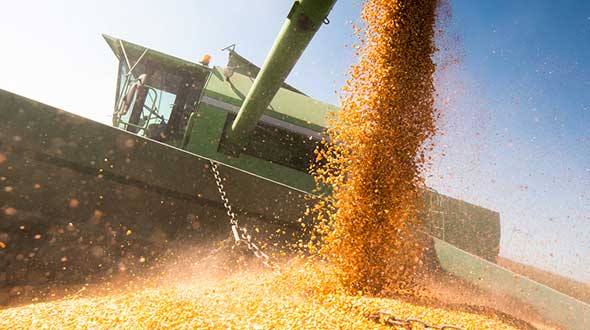
Crop drying demand may be down in the Corn Belt this year, as a powerful derecho damaged the corn crop in parts of Iowa and Illinois. Photo: fotokostic/iStock / Getty Images Plus/Getty Images
As with industry organizations throughout the country, the Iowa Propane Gas Association (IPGA) has been hosting frequent conference calls and other confabs with propane stakeholders and relevant government officials. The approach of harvest season was a key topic of conversation.
With the corn crop maturing at a faster rate due to higher temperatures and lower rainfall, initial crop reports suggested that less propane than last year would be needed for crop drying.
Then Iowa experienced a derecho – a powerful complex of storms that produce straight-line winds – that impacted about 33 percent of the corn crop, according to Gov. Kim Reynolds.
For New Century FS, an agricultural cooperative that operates in the hardest-hit areas of Iowa, that means a slower crop drying season and perhaps fewer supply constraints than last year during the upcoming heating season, says Jay Christie, energy sales manager at the company.
“Our demand will be cut at least in half – probably more – for crop drying,” he says.
Despite the likelihood that crop drying demand will be down, IPGA has been preparing for possible supply issues.
“Since last fall and winter, the propane industry has been working with wholesalers and pipelines as well as truck and rail transportation specialists to ensure we can provide what our customers need, when they need it,” says IPGA CEO Deb Grooms.
Overall, as of mid-summer, the grain drying season was shaping up to be business as usual and nothing like the headache-laden harvest of 2019, according to data compiled by PERC.
“Current trends show a drier season and more irrigation needed ahead of the 2020 harvest season, making it less likely that significant grain drying will occur as heating needs increase, as was the case in 2019,” says Mike Newland, PERC’s director of agriculture business development.








